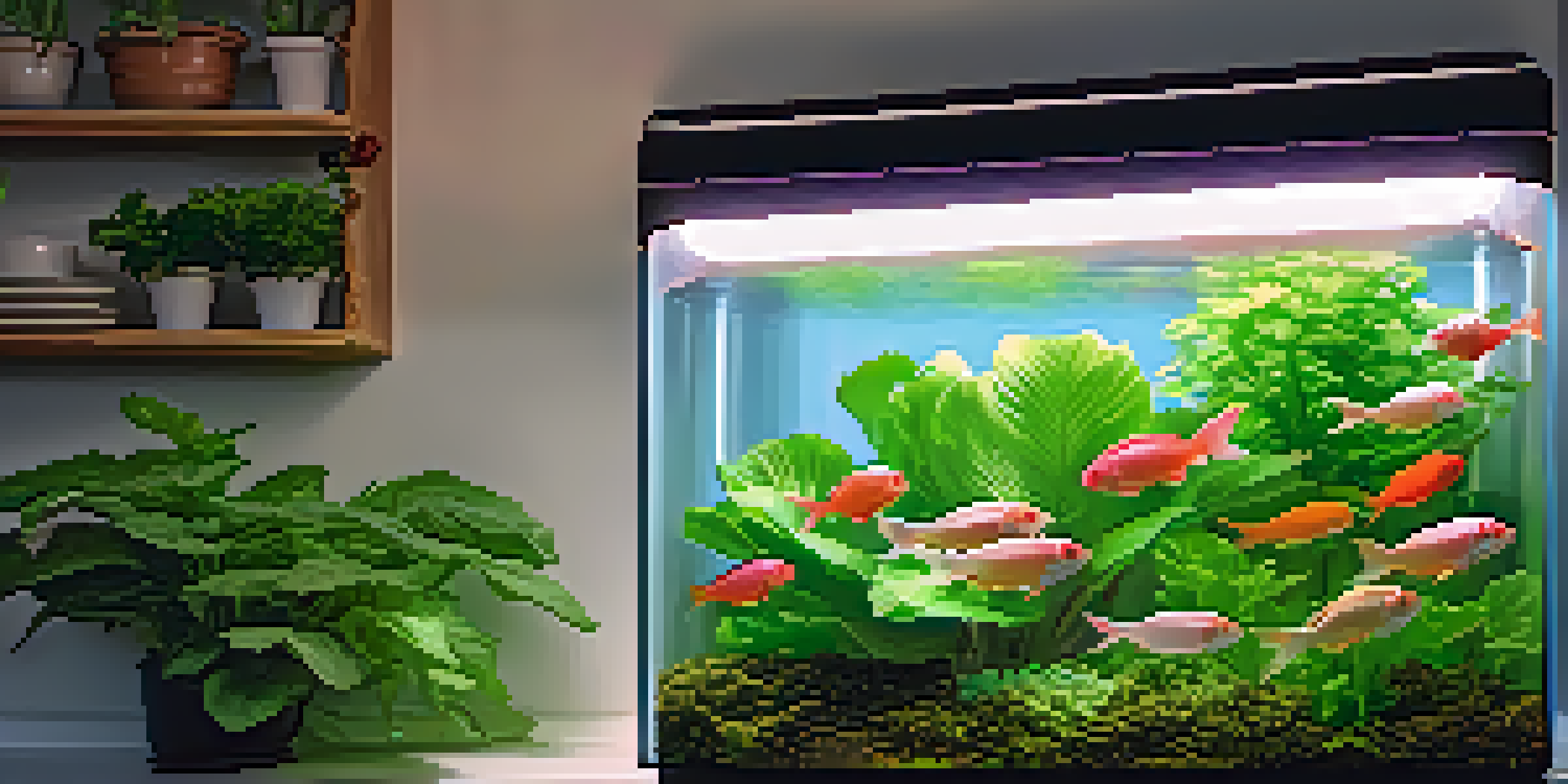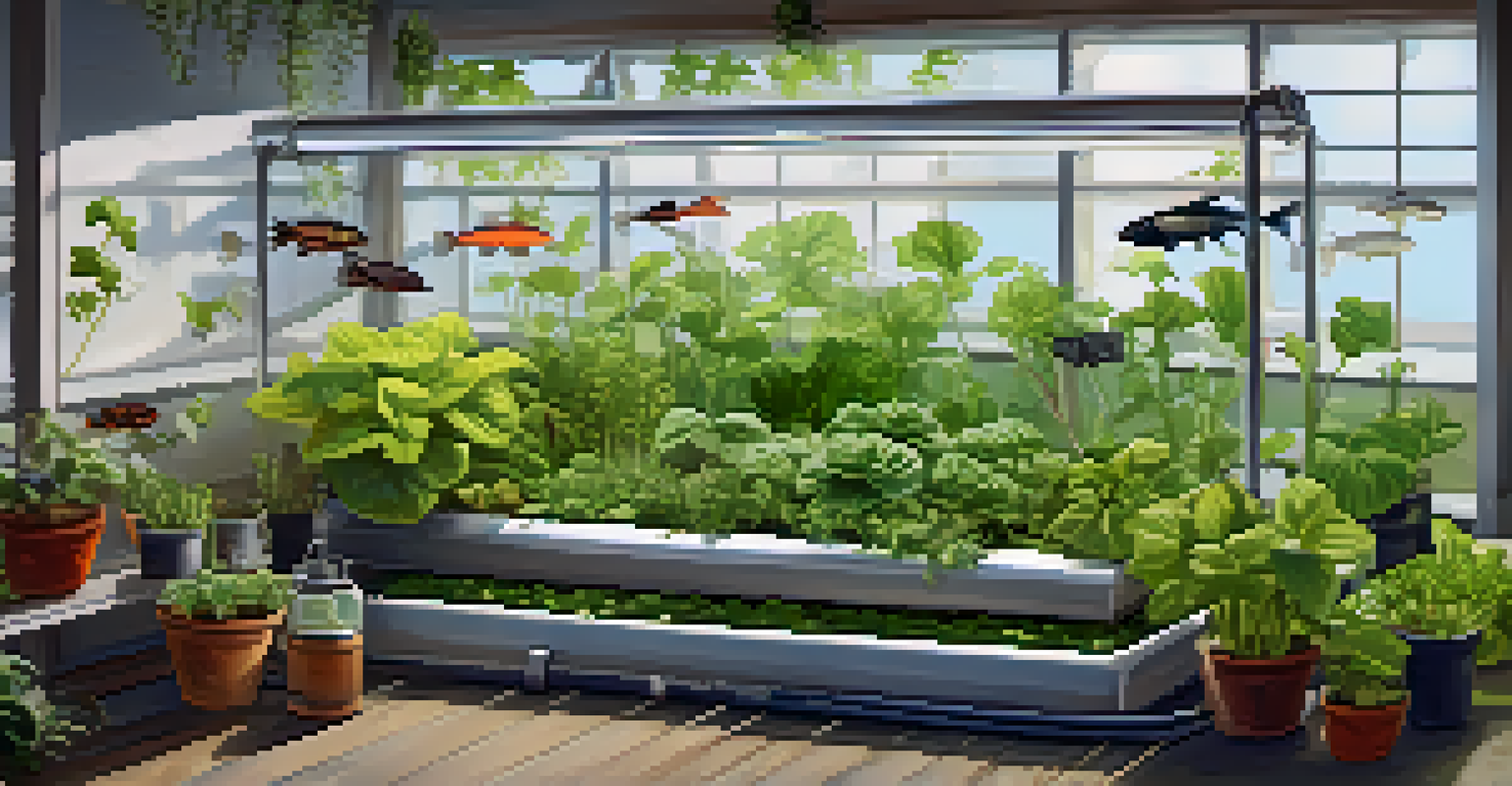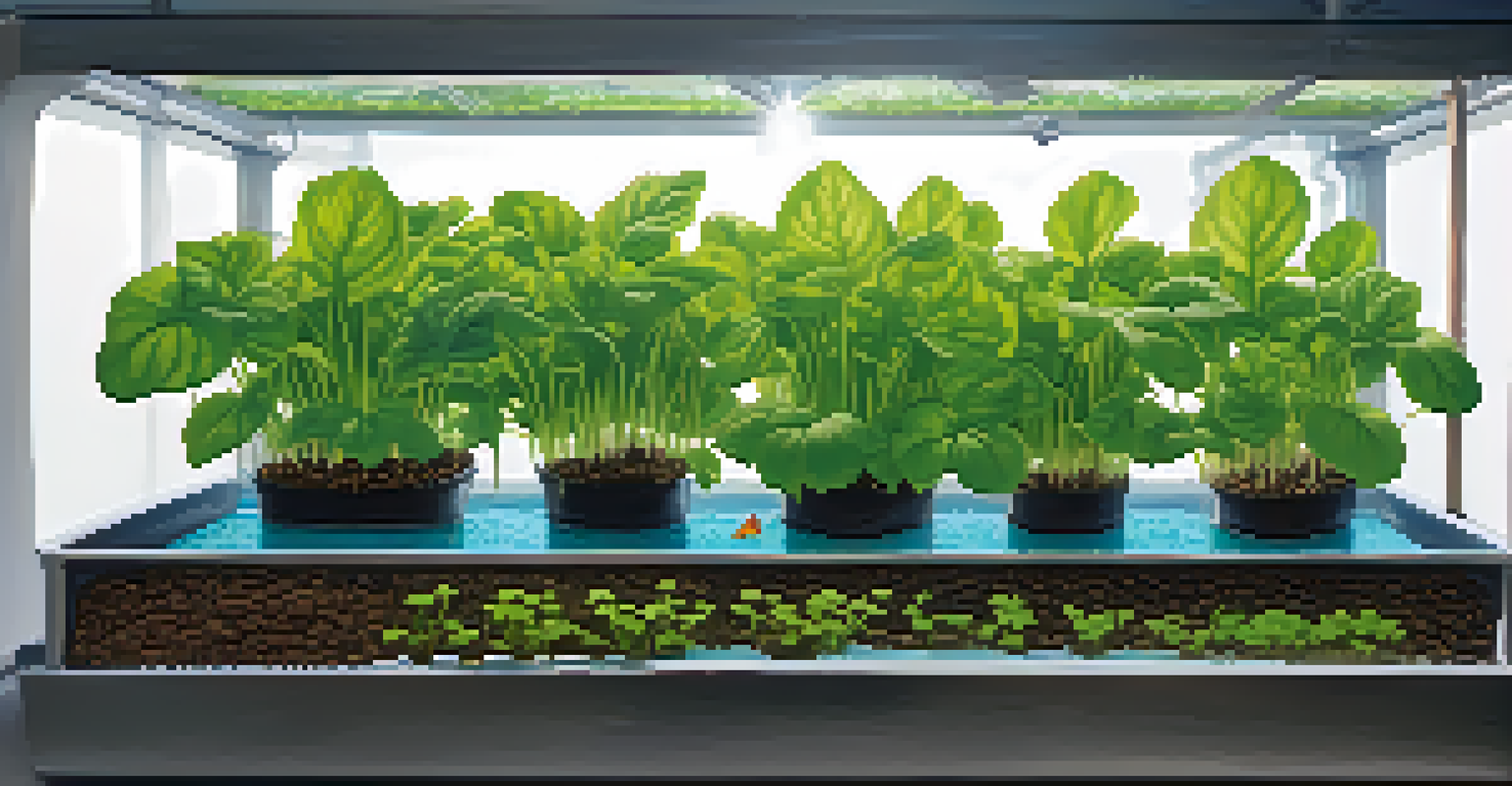Setting Up Your First Aquaponics System: A Step-by-Step Guide

Understanding the Basics of Aquaponics Systems
Aquaponics is an innovative method of farming that combines aquaculture, or fish farming, with hydroponics, the cultivation of plants in water. In this symbiotic system, fish waste provides organic nutrients for the plants, while the plants help filter and clean the water for the fish. This creates a self-sustaining ecosystem that maximizes resource efficiency and minimizes waste.
The greatest fine art of the future will be the making of a comfortable living from a small piece of land.
Imagine a mini-ecosystem where fish and plants work together, much like a harmonious dance. The fish contribute to the nutrient cycle, while the plants absorb those nutrients, creating a continuous loop of growth and nourishment. This not only boosts plant growth but also leads to healthier fish, making aquaponics a fantastic choice for sustainable agriculture.
Before diving into setting up your system, it's essential to grasp these foundational concepts. Understanding how fish and plants interact will guide your decisions and help you troubleshoot any issues that may arise down the road.
Choosing the Right Location for Your System
Selecting the perfect location for your aquaponics system is crucial, as it can significantly impact its success. Ideally, you want a spot that receives plenty of natural sunlight, as plants thrive on light. Additionally, consider proximity to a water source and electricity for pumps or heaters, if necessary.

Think of this decision like choosing the best spot in your home for a new plant; it needs sunlight, water, and a bit of TLC. A well-placed system can lead to higher yields and healthier plants and fish. You might also want to consider whether you prefer an indoor or outdoor setup, as each has its own set of advantages.
Aquaponics: A Sustainable Ecosystem
Aquaponics combines fish farming and plant cultivation in a symbiotic system that maximizes resource efficiency.
Once you have a suitable location in mind, ensure it's easily accessible for maintenance. You'll be checking on your fish and plants regularly, so a convenient setup will make the process more enjoyable and straightforward.
Selecting the Right Fish for Your Aquaponics System
The choice of fish is a foundational aspect of your aquaponics system. Different fish species have unique care requirements, growth rates, and temperature preferences. Popular choices include tilapia, catfish, and trout, as they are hardy and grow well in aquaponics environments.
Sustainability is no longer about doing less harm. It’s about doing more good.
When selecting fish, consider your climate and the size of your system. For instance, tilapia thrive in warmer waters, making them a great choice for warmer climates, while trout prefer cooler waters. This is similar to picking the right pet based on your lifestyle; you want to ensure you can provide the right environment for your fish to thrive.
Research the specific needs of your chosen fish species, including tank size and feeding requirements. Knowing these details will help you create a balanced ecosystem where your fish can grow healthy and strong, ultimately benefiting your plants as well.
Choosing the Right Plants for Your Aquaponics System
Just like fish, the plants you choose for your aquaponics system will significantly impact its success. Leafy greens like lettuce and herbs like basil are popular choices for beginners due to their fast growth and minimal nutrient requirements. They also thrive in the nutrient-rich water provided by your fish.
Think of plant selection as picking ingredients for a recipe; you want to combine flavors that complement each other. If you choose plants that require similar conditions, they will flourish together, creating a bountiful harvest. Additionally, consider your local climate and growing season when deciding which plants to include.
Choosing Fish and Plants Wisely
Selecting the right fish and plants based on their unique needs and compatibility ensures a thriving aquaponics system.
As you become more experienced, you can experiment with a wider variety of plants, including fruit-bearing options. However, starting with easy-to-grow varieties will help you build confidence and establish a successful system.
Building Your Aquaponics System: Key Components
When it comes to building your aquaponics system, there are several key components to consider. At its core, you'll need a fish tank, a grow bed for plants, and a pump to circulate water. Depending on the type of system you choose—media-based, nutrient film technique, or deep water culture—your setup will vary slightly.
Think of this process as constructing a tiny ecosystem. Each part plays a vital role, much like the various ingredients in a well-balanced meal. For example, the grow bed serves not only as a planting area but also as a filtration system for your water, ensuring that your fish remain healthy and your plants receive the nutrients they need.
Make sure to pay attention to the design and layout of your system. A well-planned setup will make maintenance easier and encourage optimal growth for both fish and plants.
Cycling Your Aquaponics System: The Nitrogen Cycle
Before introducing fish and plants, it's crucial to cycle your aquaponics system to establish beneficial bacteria. This process, known as the nitrogen cycle, converts fish waste into nutrients that plants can absorb. Essentially, you'll be creating a thriving environment that supports both fish and plant life.
Imagine this step as preparing the soil for a garden; you wouldn't plant seeds in dry, untested soil. Similarly, cycling your system ensures that the water is safe and nutrient-rich for your fish and plants. This process typically takes 4-6 weeks, but patience is key.
Regular Maintenance is Key
Consistent monitoring and maintenance of water quality and environmental factors are essential for the success of an aquaponics system.
To cycle your system, you can use fish food or ammonia to kickstart the process. Monitor the water parameters, such as ammonia, nitrite, and nitrate levels, to ensure the cycle is progressing as it should. Once the cycle is complete, your aquaponics system will be ready for fish and plants!
Maintaining Your Aquaponics System for Success
Regular maintenance is essential for keeping your aquaponics system thriving. This includes monitoring water quality, checking fish health, and ensuring plants are growing well. You'll need to test parameters like pH, ammonia, nitrite, and nitrate levels to keep everything balanced.
Think of maintenance as tuning a musical instrument; if one string is off, the whole melody can be affected. By staying on top of these tasks, you ensure that both your fish and plants are healthy and productive. A well-maintained system will yield delicious produce and happy fish.

Additionally, be prepared to adjust as needed. Environmental factors, such as temperature and light, can impact your system's performance. By being proactive and attentive, you'll create a flourishing aquaponics ecosystem that continues to thrive.